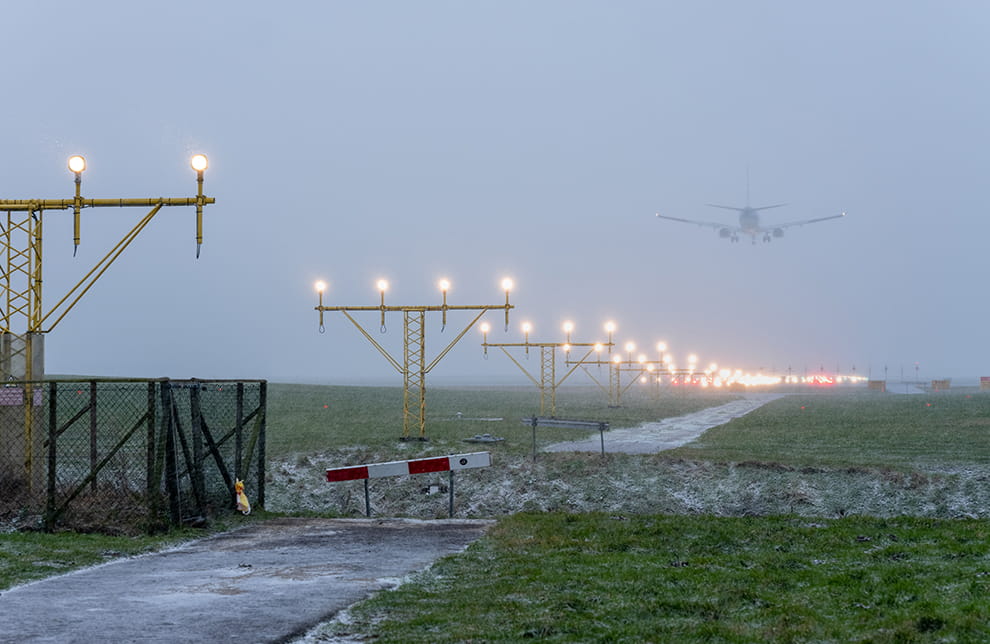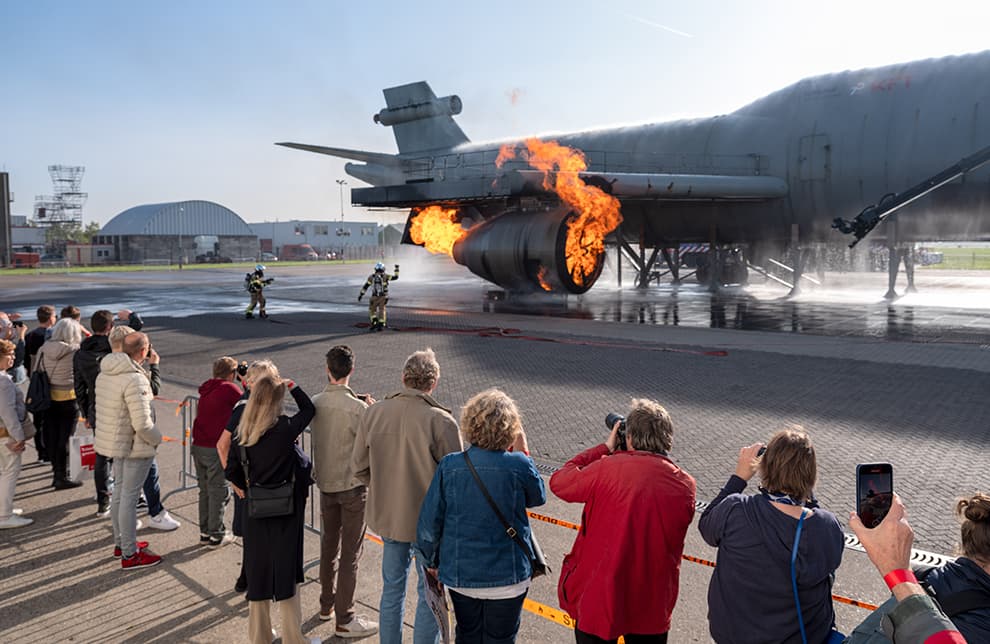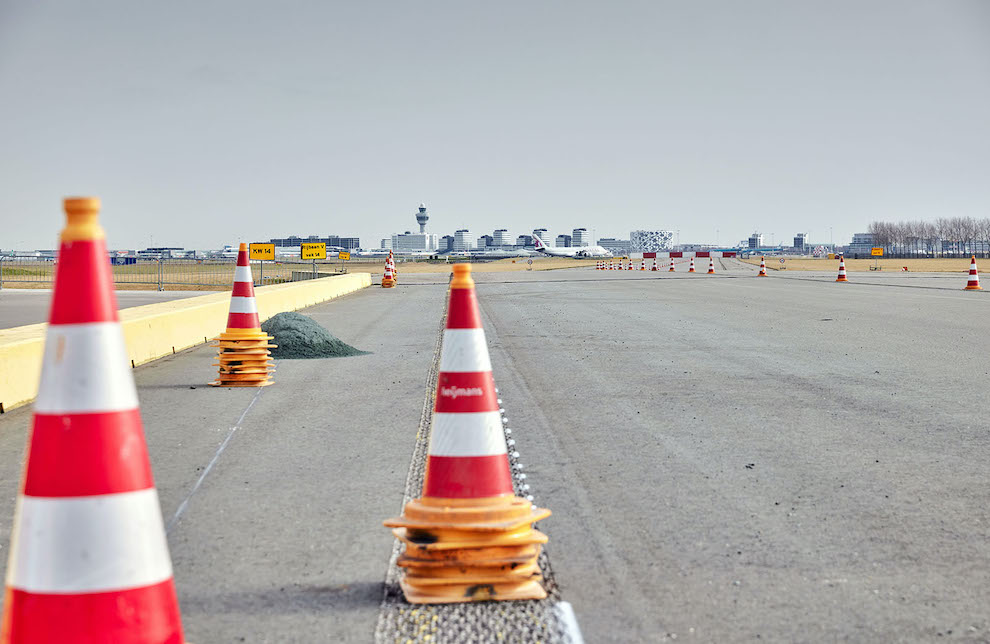Flying safely in reduced visibility

What does reduced visibility mean?
Reduced visibility is when air traffic controllers and pilots can see less than five kilometres into the distance. We call this Runway Visual Range (RVR). We also talk of reduced visibility when the bottom of the clouds is less than 300 metres (1000 feet) above the ground (low-hanging clouds). If visibility is less than 1500 metres and the cloud base lower than 100 metres (300 feet), pilots and air traffic controllers no longer have a sufficient view of the runways and taxiways. We then talk of Low Visibility Procedures (LVP).
Low Visibility Procedures (LVP)
There are four phases to LVP – A, B, C and D (with D representing the worst visibility conditions).
- LVP A: Visibility is less than 1.5 kilometres and the cloud base is between 60 and 100 metres;
- LVP B: Visibility of runways in use is less than 550 metres and the cloud base is lower than 60 metres;
- LVP C: Visibility of the runway is less than 350 metres;
- LVP D: Visibility of the runway, Kaagbaan or Buitenveldertbaan, is less than 200 metres.
Adjustments to runway use
Safety is the utmost priority. At times of poor visibility, there is a risk of aircraft collision due to air traffic control not being able to see them. When it’s foggy or when there’s low-hanging cloud, only runways that are ‘independent’ of each other can be deployed. This means that the risk of planes colliding with each other is as low as possible.
- During peak landing times, it is important that there is as little chance as possible of crossing traffic at the two runways in the event of a go-around. That’s why runways that are parallel to each other are used. For example, the Polderbaan and Zwanenburgbaan or the Zwanenburgbaan and Aalsmeerbaan.
- At peak take-off times, it is important that there is as little chance as possible that aircraft will cross each other in the air. That’s why aircraft take off as much as possible from runways that face opposing directions during peak time periods and when visibility is low. It is often the Buitenveldertbaan Runway that gets deployed in these circumstances.
- LVP D means there are no take-off or landing peaks and that we adopt 1 + 1 runway use, e.g. Kaagbaan Runway and Polderbaan Runway.
Extra safety measures
The worse the visibility, the more safety measures are taken at Schiphol. Runways are secured with stop bars at the entrances and exits, aircraft fly further away from each other, runway use is adjusted, works on airport grounds are limited or halted and traffic controllers actively guide pilots when taxiing at the airport. Thanks to tools like the Instrument Landing System (ILS), aircraft can continue to land even when visibility is reduced.
Keeping more of a distance
The lower the visibility, the more aircraft need to keep a distance from each other during their approach. This means that fewer aircraft per hour can land on the same runway. Or that aircraft cannot depart from Schiphol. That’s why fog, mist and low-hanging cloud may lead to delays and sometimes even flight cancellations.
Read the previous blogs
-
Neighbour Days 2023 full of info and spectacle
Published on:An information market, the snow fleet in its full glory, and an impressive firefighter drill. The 2023 Schiphol Neighbour Days were a huge success.

-
DeNoize tests smart window tech near Schiphol
Published on:DeNoize has constructed a pilot house near Schiphol to test their pioneering smart window technology that can reduce noise nuisance experienced by residents.

-
Planning maintenance with our neighbours in mind
Published on:When a runway undergoes maintenance, air traffic can sometimes be affected. That’s why the planning of runway maintenance is so important.
